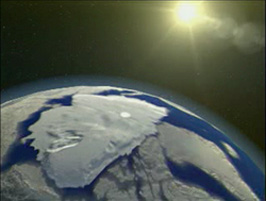“Ice asks no questions, presents no arguments, reads no newspapers, listens to no debates. It is not burdened by ideology and carries no political baggage as it changes from solid to liquid. It just melts.”
- Henry Pollack, Ph.D., Geophysicist and Author, A World Without Ice


December 5, 2009 Albuquerque, New Mexico - This week 2007 Nobel Peace Prize participant and Professor Emeritus Geophysicist Henry Pollack, Ph.D., was in Albuquerque to speak at the University of New Mexico about his new book, A World Without Ice, released in October 2009. I was able to interview him before his presentation about the recent leaked climate data scandal, the upcoming December 7 to 18, 2009, Copenhagen global climate conference that Dr. Pollack will attend and his perspective on Earth's climate past, present and future. According to the United Nation's Inter-Governmental Panel on Climate Change (IPCC), Earth will warm up between 1.4 degrees Celsius and 5.8 degrees Celsius (roughly 2 degrees Fahrenheit to 10 degrees Fahrenheit) by the end of this century.
Click here to subscribe and get instant access to read this report.
Click here to check your existing subscription status.
Existing members, login below:
© 1998 - 2024 by Linda Moulton Howe.
All Rights Reserved.

